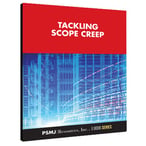 “Scope creep” is an endemic disease in architecture and engineering practices. It destroys profitability, causes schedule blowout, and sets up an unfair precedent where our clients feel comfortable requesting more and more, while not providing appropriate (or any!) compensation.
“Scope creep” is an endemic disease in architecture and engineering practices. It destroys profitability, causes schedule blowout, and sets up an unfair precedent where our clients feel comfortable requesting more and more, while not providing appropriate (or any!) compensation.
Despite the commonplace of this disease, it’s curable. The
antidote lies in fully understanding, and then tackling, the
typical causes of a creeping scope.
-
No scope is flawless. The details of a project scope are rarely known at the start of the project, and even when they are, there are often changes along the way
-
We believe that we can’t delineate the scope of services, so we don’t try.
-
The common practice of basing fees on the cost of construction ignores the reality that the scope of design services is not directly proportional with cost of the construction, even within a similar project type.
-
When we plan a project scope and schedule, we tend to think in terms of phases rather than activities.
-
We routinely fail to clarify and manage the project responsibilities of clients and others whose input to the design process is required.
-
We are nice guys, eager to do whatever it takes to complete a project and please clients—and we don’t like to talk about money.
-
We rarely have a solid system for keeping track of costs versus work completed (earned value) as we go along.
-
We often fail to keep clients advised about scope changes— whether they were made by us or requested by the client—so they have no perception that the extra work was not part of our original proposal.
Except for the first item, these things can be remedied, to restructure the client’s expectation and understanding of scope changes, without damaging the design firm/client relationship. The solution does not lie in being strictly dogmatic about contracted services, and insisting that any change constitutes an
extra change. Do that and your clients will never give us another project.
Instead, you should always make some allowance in the price for scope change. There is no downside to identifying that in your proposal—although most professionals prefer not to. The important point is to track charge changes against this allowance, and to know when it has been used up.
So how can we manage points two through eight above so that scope creep doesn’t destroy our profits and wreck our schedules?
First: If you are still basing fees on a percentage of construction cost, STOP! Figure out what the project will cost, based on the information available. Focus on actions required to complete the project, not on stages of the project. Add something for unknowns, but exclude unknowns you can’t roughly quantify. Record this cost plan so you can track actual costs against planned costs.
Second: In your proposals, define what a change order is, and what will trigger one. A good guide: A change order may be issued if an element of scope that is required is not identified in either the client’s brief or your proposal.
Third: Record ALL changes, whether or not you intend to ask for a change order. Keep this list up-to-date, and present it at every project control meeting. It will have a powerful effect on the way the client sees the way you work, because you’ll be making many more changes without charge than you are asking change orders for.
Fourth: Keep an eye on your allowance for unknowns. Don’t use it up on scope change that really should be performed under a change order.
Lastly: Track earned value, project by project. If your practice management software doesn’t do it that easily, attend one of the PSMJ Project Management Bootcamps. We’ll show you how, and give you the tools to do it.
 Scope creep happens, but you can learn how to take control of your architecture or engineering firm’s destiny, and start planning against scope creep. Check out PSMJ's complimentary ebook Tackling Scope Creep on on tips on how to avoid, manage, and eliminate it!
Scope creep happens, but you can learn how to take control of your architecture or engineering firm’s destiny, and start planning against scope creep. Check out PSMJ's complimentary ebook Tackling Scope Creep on on tips on how to avoid, manage, and eliminate it!
You also might be interested in these project management-related blog posts
4 Essential Project Management Tips for A/E Professionals
How to Overcome Impediments to Effective Project Management
Project Change Management – How Other Industries Do It
The 6 Things to Demand from Project Management Software
Today's Top Ten Project Management Trends



